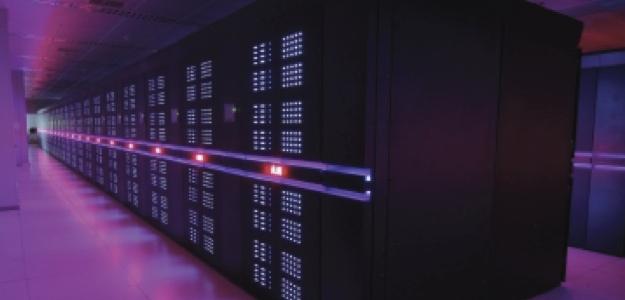 Ladies and gentlemen, we have a new winner. Clocking in at the remarkable processing speed of 30.65 petaflops without breaking a virtual sweat, it’s our pleasure to introduce the Tianhe-2, a Chinese super computer that is quite comfortably the fastest computer on Earth.
Ladies and gentlemen, we have a new winner. Clocking in at the remarkable processing speed of 30.65 petaflops without breaking a virtual sweat, it’s our pleasure to introduce the Tianhe-2, a Chinese super computer that is quite comfortably the fastest computer on Earth.
The Tianhe-2, also known as the Milky Way 2, is the creation of China’s National University for Defense Technology. The device was built to “provide an open platform for research and education and provide high performance computing service for southern China,” according to the University of Tennessee’s Jack Dongarra. Dongarra helped compile a list of the Top 500 supercomputers in the world, and wrote a report on this latest machine.
The Tianhe-2 reportedly has a storage of 12.4 petabytes and memory of 1.4 PB. In case you’re not familiar, a petabyte is the equivalent of 1,000 terabytes, or 1,000,000,000,000,000 bytes. Yes, that’s five commas.
As you might expect, something of that scale requires some power to run properly. “The peak power consumption under load for the system is at 17.6 [megawatts],” Dongarra explains in a white paper about the computer, adding that “this is just for the processors, memory and interconnect network. If cooling is added the total power consumption is 24 MWs.” To put that in context, the high-speed Eurostar train that runs underneath the ground between England and France operates at about 12 MW, with most traditional high-powered electric locomotives peaking around three to five MW.
The machine runs on Kylin Linux, an operating system developed by teams at the National University for Defense Technology, and is built of a staggeringly large system. Dongarra’s report mentions touring “the computer room” that includes Intel Ivy Bridge and Xeon Phi processors, and lots of them. “There are 32,000 Intel Ivy Bridge Xeon sockets and 48,000 Xeon Phi boards for a total of 3,120,000 cores.”
In the tests, the Tianhe-2 managed an impressive speed of 30.65 petaflops, which makes it 74 percent faster than the previous holder of the World’s Fastest Computer record. A petaflop, for the curious and unsure, equals one quadrillion – a million billion – floating point operations per second, also known as… a lot. It’s part of a series of terms that includes megaflops, gigaflops, and teraflops, and until as recently as 2009, a petaflop was more a theoretical concept than an actual computing reality. The first computer to reach a petaflop was IBM’s Roadrunner in June of that year.
What makes the Tianhe-2 even more impressive – as if being a full 74 percent faster than its closest competition wasn’t enough – is that it wasn’t even operating at full strength during the testing. According to Dongarra, it was only at 90 percent capacity when it clocked the amazing 30.65 PF speed. Just imagine how fast the computer could go if it really tried.
Editors' Recommendations
- How to build a PC from scratch: A beginner’s guide for building your own desktop computer
- A PC anyone can build: The 2018 Kano computer kit is the cheapest it’s ever been


